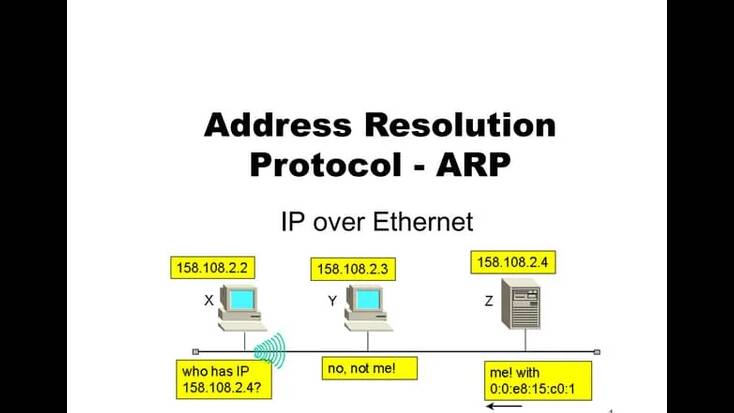Table of Contents
Introduction
Address Resolution Protocol is a communication protocol that plots the Internet Protocol (IP) address to the Media Access Control (MAC) address. This protocol enables the communication between devices connected to the network.
Applications and software connected to the internet utilize IP addresses to send information. Concurrently, the communication between systems occurs through hardware addresses, also known as MACs. The most used IP in the modern world is (IPv4) IP version 4, which is 32 bits long. However, MAC addresses are 48 bits long. Thus, ARP translates the 32-bit address to 48 and vice versa.
Importance of Address Resolution Protocol:
The Address Resolution Protocol (ARP) is a crucial network communication component. It functions to map an IP address to a corresponding MAC (Media Access Control) address on a local network.
This mapping is essential for adequately functioning data transmission in Ethernet-based networks. Certainly, with ARP, devices can find and communicate with each other by resolving the layer 3 (IP) addresses to the layer 2 (MAC) addresses, facilitating efficient and accurate data delivery.
Conditionally, without ARP, devices may struggle to identify the correct destination, thus leading to network communication failures. Address resolution protocol plays a significant role in enabling smooth and reliable network connectivity.
Types of Address Resolution Protocol:
There are varied versions and case-to-case uses of ARP; below are a few types of address resolution protocols:
- Proxy ARP: A network device responding to ARP requests on behalf of another device, generally used in routing situations.
- Gratuitous ARP: A device issues an ARP request with its IP and MAC address to update the ARP cache of different devices on the network.
- Reverse ARP: Used to determine an IP address from a known MAC address, generally used in legacy diskless workstations.
- Inverse ARP: Contrary to what a traditional ARP does, an Inverse ARP does the opposite – it maps IP addresses using the associated media access control.
Methodology of Address Resolution Protocol:
When a computer joins a local area network (LAN), it is assigned an IP address. ARP performs two critical tasks if a source device requests to send an IPv4 packet to another device.
Firstly, the ARP program checks the ARP cache table, consisting of IPv4 address to MAC address mappings.
Secondly, if the ARP cache lookup doesn’t match the MAC address, the source server forms an address resolution protocol message broadcasting on the local area network (LAN).
Conclusion:
In conclusion, the Address Resolution Protocol (ARP) is a fundamental pillar of modern networking, simplifying the seamless & efficient exchange of data within Ethernet-based local networks.
Additionally, ARP’s ability to map IP addresses to MAC addresses ensures that devices can correctly identify and communicate with one another, thereby avoiding communication breakdowns. This protocol plays an often-overlooked yet vital role in our interconnected world, underpinning the functioning of the internet and local networks.
Reverently, ARP’s importance lies in its ability to provide the necessary link between higher-level IP addresses and lower-level MAC addresses, facilitating the reliable and accurate transmission of data, a keystone of modern communication.

